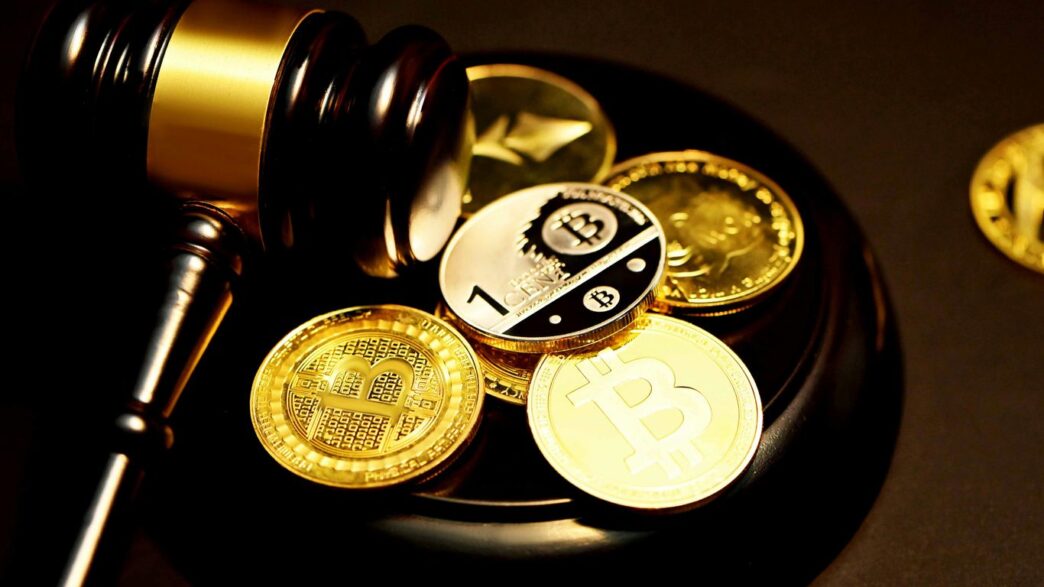Every time I check the news, it feels like there’s a new headline about crypto and the law. People keep asking, is crypto a security? The answer isn’t simple. Regulators, lawmakers, and crypto fans all have their own opinions, and the rules seem to change every year. In 2025, the debate is still going strong, and if you’re confused, you’re not alone. This article breaks down what’s going on, why it matters, and what it means for anyone interested in crypto.
Key Takeaways
- Whether crypto is a security depends on how it’s used and sold, not just what it’s called.
- The SEC and CFTC both want a say in crypto regulation, but their rules are different.
- The Howey Test is still the main way courts decide if a crypto asset is a security.
- New laws and court cases in 2025 are shaping the rules, but things are still unsettled.
- How crypto is classified affects everything from how exchanges work to what protections investors get.
Defining Securities and Commodities in the Crypto Landscape
When people talk about crypto regulation, it always circles back to whether a particular token is a security or a commodity. And honestly, the answer isn’t always obvious. Your favorite crypto might straddle the line, with each classification leading to very different rules. Let’s break down how the law frames these two definitions and why they matter so much for the industry.
Legal Standards for Identifying Securities
Under U.S. law, a security is basically any investment where you expect a return based mostly on someone else’s work. It’s a broad category—it covers not just stocks and bonds, but also “investment contracts,” as spelled out since the 1930s. The famous Howey Test (from a 1946 Supreme Court case) is still how lawyers and regulators figure out if something is a security:
- Did you put money in?
- Into a common project or business?
- Do you expect profits?
- Are those profits mainly because of what others do?
If all four answers are yes, regulators like the SEC consider it a security. Crypto projects often get tripped up by that last part—if their investors expect tokens to gain value thanks to what the developers are doing, courts might say they’re selling securities.
The Role of the SEC and CFTC
Whether your crypto is a security or a commodity makes all the difference about who regulates it. The SEC watches over securities—think tokens tied to investment profits, or promoted in ways that attract investors looking for gains. Meanwhile, the CFTC handles commodities like raw materials or broad market assets. With crypto, the lines blur:
| Asset Type | Regulator | Main Focus |
|---|---|---|
| Securities | SEC | Investor protection |
| Commodities | CFTC | Market integrity |
- The SEC can demand projects register, disclose information, and protect investors from fraud.
- The CFTC polices things like market manipulation for assets that aren’t traditional investment vehicles.
- Sometimes, a token might look like both, which keeps lawyers (and Congress) busy.
For a perspective on how innovation and regulation intersect, especially as security systems shift from on-premise to cloud, there’s a great insight from Cisco’s Padmasree Warrior on how tech changes force new rules and standards.
Practical Implications for Crypto Issuers
Getting the classification right is more than just paperwork—it shapes every step for a crypto project:
- If a token is a security, the company has to register with the SEC or find an exemption, which can take months and real money.
- Exchanges listing securities might also need to register or get special licenses.
- Commodities have looser rules, but issuers still risk action if there’s market abuse or manipulation.
For everyday developers and startups, uncertainty about which category they fall under means extra legal bills and slower launches. Many have to consider:
- Whether to block US users altogether
- How to explain their token’s purpose without sounding like an investment
- What kind of ongoing disclosures they’ll have to make
At the end of the day, these definitions affect not just compliance headaches, but also who can participate, how tokens are traded, and whether the whole project ever gets off the ground.
How the Howey Test Shapes the Question: Is Crypto a Security?
The debate over whether a particular crypto token is a security keeps coming back to the Howey Test. You’ll hear lawyers, regulators, and startup teams talk about it constantly. But what does this old Supreme Court decision actually mean for crypto in 2025?
The Four-Pronged Howey Analysis
The Howey Test comes from a 1946 Supreme Court case called SEC v. W.J. Howey Co. The Court’s decision set out a four-part test to figure out whether something’s an “investment contract”—which means it’s likely a security under US law:
- Investment of money
- In a common enterprise
- With a reasonable expectation of profits
- To be derived from the efforts of others
If a crypto project checks all these boxes, it’s more likely the SEC will view its token as a security. This has huge consequences, from registration requirements to how tokens can be offered or traded.
Here’s a quick table breaking down these prongs and how they typically show up in crypto:
| Howey Prong | What It Means for Crypto |
|---|---|
| Investment of money | Users buy tokens with cash/crypto |
| Common enterprise | Funds often pooled; network shares risk |
| Expectation of profits | Buyers hope token value goes up |
| Efforts of others | Developers or promoters drive success |
Significance of Marketing and Developer Roles
How a crypto project is pitched makes a difference. If the team spends most of its time highlighting how much the price could go up, or if they talk a lot about the hard work they’re putting in, those are big hints for regulators that it might be a security. For example:
- Projects that advertise big profits based on what the developers are building often face scrutiny.
- If community members depend on the core team to make things happen, that supports the “efforts of others” point.
- Even if a token is labeled as a “utility token,” it can still be a security if the facts fit the Howey formula.
Sometimes, what the team says in interviews, on X/Twitter, or in their whitepaper comes back to haunt them. Courts look at these statements if there’s a dispute.
Court Precedents and Recent Litigation
Federal courts have helped sharpen how the Howey Test applies to crypto projects. Some major cases in the past few years:
- SEC v. Ripple Labs: Still ongoing as of 2025, this high-profile case began back in 2020. The core question: Did Ripple offer XRP as an unregistered security? The SEC is pointing to Ripple’s aggressive marketing and the way investors leaned on Ripple’s business plans for profit.
- Kik Interactive: The SEC went after Kik for its ICO, saying it crossed the Howey line—common enterprise, profit expectation, and clear dependence on the team. The court sided with the SEC.
- Telegram: Similar story—Telegram’s token sale was stopped after courts decided their approach fit the test.
These cases have shown that facts matter more than labels. Calling your token a “utility token” won’t protect you if courts see it as an investment opportunity relying on someone else to make the price rise. The Howey Test is still the main tool for sorting this out, even almost 80 years after it was written.
SEC Enforcement and the Ongoing Regulatory Debate

The last couple of years have been anything but quiet for crypto, especially with the SEC flexing its regulatory muscles. If you work in crypto, you know the tension: that feeling that the rules keep shifting, or maybe were never really there to begin with. As Congress debates new bills and lobbyists keep pouring in money, the SEC’s hands-on approach still sets the tone, even as the shape of enforcement continues to change.
Key Cases Impacting Crypto Classification
Several big legal battles have played out as the SEC tries to decide which tokens it thinks are securities. These cases have set important precedents:
- SEC v. Ripple: This lawsuit shook up the industry by highlighting how token sales and the promises around them can blur into securities territory.
- SEC v. Coinbase: The SEC’s case against major exchanges has turned into a clash over which coins count as securities and what platforms need to do to stay compliant.
- Binance and others: Enforcement actions against global exchanges showed that the SEC is willing to target big players even if they operate mostly overseas.
These cases have left a mixed legacy: some tokens got clarity, others didn’t. But all sent the same message—if you skirt around registration, you might end up in court.
SEC Actions Against Exchanges and Tokens
In the last two years, the SEC has ramped up:
- Investigations into how tokens are listed on big exchanges
- Lawsuits against offshore exchanges serving US customers
- Demands for more detailed disclosures from token issuers and platforms
| Year | SEC Lawsuits (Crypto-Related) | Major Exchange Actions |
|---|---|---|
| 2023 | 47 | 11 |
| 2024 | 32 | 8 |
Even with fewer brand-new lawsuits this year, the threat level hasn’t really dropped. Most big crypto exchanges have had to respond, sometimes by delisting tokens or pausing US services until things are worked out.
Compliance Requirements for Crypto Projects
If you’re launching a token or running a platform, the compliance list is getting longer:
- Figure out if your token is an investment contract (the dreaded Howey Test always lurks).
- Register, or at least talk to the SEC—even if you argue your token is just a utility token.
- Keep detailed records to show how and why you’re compliant.
- Prepare for a two-year “compliance period” on some assets (per recent proposed legislation). This gives projects a window, but it also piles on oversight.
The bottom line: the SEC still drives enforcement, but everyone’s waiting to see what Congress hammers out. Until then, most crypto teams operate with a healthy dose of legal anxiety—and a new appreciation for paperwork.
Global Perspectives on Crypto Regulation
When it comes to regulating crypto, you can see just how differently the rules shake out depending on where you live. Some countries are racing ahead, while others take a wait-and-see approach that leaves everyone guessing. The result is a patchwork of laws that’s tricky for businesses and confusing for regular folks hoping to buy or use digital coins.
Regulatory Frameworks in the US and Europe
The United States has, up until recently, been all over the place with crypto regulation. The SEC, CFTC, IRS, and several other agencies all have their own ideas about how to treat digital assets. Sometimes, Congress steps in with a proposed bill—like the Responsible Financial Innovation Act—but actually getting one through takes time. Lately, there’s a push for clear laws outlining what counts as a security versus a commodity, especially with more lawmakers recognizing the need for national rules instead of dozens of state-level approaches. Europe, on the other hand, has pressed forward with the MiCA (Markets in Crypto Assets) regulation, which gives companies a checklist of what’s required to legally operate. It’s all about structure, consumer protection, and stopping bad actors at the border.
Here’s a quick look:
| Region | Approach | Key Elements |
|---|---|---|
| US | Fragmented, evolving | SEC and CFTC disputes, city/state-level laws, new bills in Congress |
| Europe | Coordinated, proactive | MiCA creates clear rules for crypto issuers, exchanges and wallets |
Asia’s Varied Approaches to Crypto
Asia isn’t just one story. Here’s what you find:
- Japan: Strict licensing makes it tough to get in, but once you’re in, it’s stable.
- Singapore: Friendly to innovation as long as anti-money laundering rules are followed.
- China: Outright bans on most crypto activities, but blockchain still gets official support.
If you’re a business looking to expand, you could run into three separate sets of rules just crossing the region.
The Impact of Regulatory Uncertainty on Innovation
Crypto projects live and die by clarity. When the rules are vague or always changing, here’s what tends to happen:
- Companies might set up overseas, looking for reliable, simple rules.
- Investors get spooked when they can’t be sure what’s legal tomorrow versus today.
- Some good ideas never take off, just because founders are afraid of breaking the law by accident.
At the same time, too much regulation can choke off new financial services innovation, especially for people who have been shut out of traditional banks. But without some kind of structure, scams and bad actors can run wild. A balancing act is happening everywhere right now, and no one seems to have it quite right yet.
Crypto’s Legal Gray Area: Utility Tokens Versus Investment Contracts
Everyone in crypto has probably heard the phrase "utility token" thrown around. It gets tossed in meetings, on Twitter, and in project whitepapers. But what does it really mean—especially if the law disagrees? That’s where this whole thing gets confusing fast.
The Utility Token Argument
So, the main idea behind utility tokens is pretty simple: they’re supposed to do something on a blockchain. Maybe it lets you use a dApp, unlock certain features, or pay for transaction fees within the ecosystem. People designing these tokens often argue that since the token has an actual use—like a subway token or arcade coin—it isn’t a security.
But here’s the curveball: calling a token "utility" doesn’t make it exempt from securities rules. US regulators, especially the SEC, look beyond what the token is called or the story behind it. If they see people buying the token mostly because they hope the price will go up—especially thanks to the work of a core team—they might still treat it like an investment contract.
Common examples of utility and other tokens:
| Token Type | Example | Primary Purpose |
|---|---|---|
| Utility Token | XRP, ETH | Uses/functions within the blockchain |
| Governance Token | UNI (Uniswap) | Voting in protocol decisions |
| Security Token | MS Token (Millennium Sapphire) | Represents ownership of an asset |
| Payment/Transactional | BTC | Used for payments or value transfer |
| Platform Token | SOL (Solana) | Supports decentralized app platforms |
How Substantive Analysis Overrides Labels
You can slap whatever label you want on a crypto token. At the end of the day, what matters is how it’s sold, who’s buying it, and why. The SEC has made it very clear that form doesn’t trump substance. If people are genuinely buying tokens to use them, that signals utility. If they’re looking to cash in from someone else’s hard work or hype, that swings the needle toward security.
- Courts and the SEC check actual buyer behavior: Are most buyers acting more like users or investors?
- They scrutinize how the project team markets the token. Is the pitch all about utility, or is it loaded with promises of future gains?
- Even if the token does something useful—if there’s an initial offering and most buyers are just parking the token hoping for a payday, the SEC might still step in.
This approach stops people from dodging securities laws just by promising some narrow tech use. Technology firms today have to adapt quickly as regulations and enforcement approaches shift, often blurring lines that seemed clear before.
Investor Protection and Disclosure Expectations
Why is this gray area such a headache? Because rules about disclosures and investor protections are stricter for securities.
Here’s what changes if a crypto token is treated as a security:
- The project might have to share detailed financial info so buyers know the risks.
- Exchanges listing the token may need to register or comply with more government rules.
- Violations can lead to heavy penalties or lawsuits—sometimes both.
The big debate isn’t really about whether a token has some utility—it’s whether labeling it a utility token should give it a free pass from basic investor protections. At the end of the day, regulators won’t be swayed by clever marketing or creative naming. The messy reality is, if you’re working on or promoting a crypto project, ignoring the legal side puts you and your users at risk.
Evolving Legislation and Political Influence in Crypto Policy
Crypto regulation in the US has become a hot topic, and not just in legal circles—it’s all over the news, in Congress, and in campaign ads. Over the past couple years, we’ve watched lawmakers try to pin down what rules should look like, all while lobbyists and political action committees have ramped up their efforts. It’s clear that the fight over crypto policy isn’t just about the rules; it’s about who gets to write them and why.
Recent Congressional Efforts and Bills
Lately, Congress has been much more active on crypto regulation than before. For a long time, the only real rules came from federal agencies or state laws, but now, actual bills are gaining traction in Washington.
- The Responsible Financial Innovation Act (RFIA) and similar bills aim to set clear guidelines for what counts as a digital asset, who should regulate them (like the SEC vs. the CFTC), and how stablecoins fit in.
- Key committees—including Financial Services and Agriculture—have established digital asset subcommittees to shepherd new legislation.
- Latest proposals often focus on giving more oversight to the CFTC, which has fewer resources than the SEC, possibly making enforcement lighter for the industry.
Here’s a quick look at some recent Congressional activity:
| Year | Bill Name | Main Sponsor(s) | Focus |
|---|---|---|---|
| 2023 | Responsible Financial Innovation Act | Lummis & Gillibrand | Clarity on digital assets |
| 2024 | Digital Asset Market Structure Bill | McHenry & Thompson | Defining SEC/CFTC roles |
| 2025 | Stablecoin Regulation Act | Torres & Hill | Rules for stablecoins |
Industry Lobbying and Political Capture
- The crypto industry spends heavily to shape the rules—almost $200 million on campaign ads in the recent election cycle.
- Lobbyists often steer discussions toward business-friendly definitions and try to shift oversight to agencies they see as less strict.
- Some lawmakers have become reliable backers for crypto interests, thanks to substantial industry contributions to their campaigns.
Critics argue this "regulatory arbitrage" is no accident. By pushing for CFTC oversight instead of the SEC, many believe crypto companies are hoping for weaker enforcement. Meanwhile, public trust in crypto remains low, with polls showing most Americans uneasy about it.
Divergent Views Among US Lawmakers
Debate is fierce. These are some of the key divisions:
- Risk vs. Innovation: Some lawmakers say too many rules will send crypto companies—and jobs—overseas. Others warn light-touch laws could mean more scams and financial risk for everyday Americans.
- Consumer Protection: Politicians like Elizabeth Warren see stricter rules as vital for protecting people from fraud, while others call for a lighter touch to let technology grow.
- Enforcement Resources: Disagreements pop up over which agencies should take charge, especially since the SEC is much bigger than the CFTC.
What’s next? The endless committee hearings and press releases suggest we’ll keep seeing new bills and fierce lobbying. Whether real clarity emerges in 2025 is anyone’s guess, but one thing’s certain: crypto isn’t just a technology debate—it’s a political fight, too.
Risks and Responsibilities: Investor Protection in Crypto Markets
Making sense of the crypto market as an investor is like learning to ride a bike with no training wheels—mistakes can get expensive, and there’s little protection if things go wrong. The landscape in 2025 is still shifting, and regulators have managed to rein in some bad actors, but overall, the risks remain high.
Market Manipulation and Fraud Concerns
One of the biggest problems in the crypto world is market manipulation. There are no clear rules like in traditional finance, so big players can easily move prices by hyping their favorite coins or pumping and dumping assets. Scams, rug pulls, and fake projects are still everywhere, despite greater scrutiny from regulatory agencies. Even legitimate platforms and tokens can fall prey to hacks or exploits, causing investors to lose money in an instant.
Some common risks:
- Price swings: Crypto values can jump or plummet in hours or even minutes, catching investors off guard.
- Counterparty risk: If an exchange gets hacked or shuts down, funds might be gone for good.
- Smart contract bugs: Automated platforms can fail if there’s a coding error or vulnerability.
Here’s a snapshot of loss sources for crypto investors (2025 estimates):
| Source of Loss | Estimated Share |
|---|---|
| Scams & Fraud | 29% |
| Exchange Hacks | 21% |
| Smart Contract Issues | 14% |
| Lost Keys/Access | 18% |
| Price Volatility | 18% |
For a closer look at regulatory oversight and why it can’t shield investors from every hazard, check out regulatory oversight is important.
Effects of Classification on Exchange Operations
How a crypto asset is classified—security, commodity, or something else—has a huge impact on where and how it trades. If the SEC dubs a token a security, big exchanges might have to delist it, or at least make trading much more complicated with heavier compliance. Besides legal headaches, this can hurt liquidity, spook investors, and shake up project communities.
Some knock-on effects:
- Smaller exchanges at risk of shutting down if they can’t meet new requirements
- Less access for US customers to a wide selection of coins
- Market fragmentation as some coins become regionally restricted
Ensuring Transparency and Accountability
Calls for more transparency are getting louder as investors push back against both outright fraud and sloppy management. Most new projects are now expected to provide real details about their teams, finances, and the code behind their tokens. Even so, there’s no simple way to weed out bad actors before damage is done.
Ways the market is (slowly) improving transparency:
- Requiring projects to publish audits for their smart contracts
- Mandating basic identity disclosures for team members on major exchanges
- Pressuring exchanges to adopt clearer reporting on trading volumes and reserves
Investors are learning to double-check claims and read the fine print, but the Wild West feeling hasn’t completely faded yet. While the push for responsible oversight is gaining ground, it’s still an uphill battle in a fast-moving, often confusing digital market.
Conclusion
So, is crypto a security? Well, it’s still not a simple yes or no. The rules keep changing, and every year brings new court cases, new laws, and a lot of back-and-forth between regulators and the crypto industry. If you’re holding crypto or thinking about getting involved, it’s smart to keep an eye on what the SEC and CFTC are saying, because their opinions really matter. For now, Bitcoin and Ethereum seem to be safe from being called securities, but most other coins are still in a gray area. The bottom line is, the debate isn’t over. Lawmakers and regulators are still figuring it out, and until they do, everyone in the crypto world just has to stay alert and be ready for more changes ahead.
Frequently Asked Questions
What does it mean if a cryptocurrency is called a security?
If a cryptocurrency is called a security, it means the law treats it like a stock or bond. This brings extra rules to protect investors, like needing to register with the government and share important information about the project.
How does the Howey Test decide if a crypto token is a security?
The Howey Test looks at four things: if people put in money, if it’s a group project, if people expect to make money, and if the profits come mostly from someone else’s work. If all these are true, the token is usually seen as a security.
Who is in charge of regulating cryptocurrencies in the United States?
In the U.S., the Securities and Exchange Commission (SEC) checks if a crypto is a security, while the Commodity Futures Trading Commission (CFTC) looks after commodities like Bitcoin. Sometimes, both groups are involved, depending on the type of crypto.
Are all cryptocurrencies considered securities?
No, not all cryptocurrencies are securities. Bitcoin and Ethereum are mostly seen as commodities, not securities. But many other tokens can be treated as securities, depending on how they are sold and promoted.
What happens if a crypto project breaks the rules for securities?
If a crypto project breaks security rules, the SEC may take action. This could mean big fines, stopping the project, or even banning the token from being sold. The people running the project could also get in legal trouble.
Why does it matter if a crypto is a security or a commodity?
It matters because the rules are different. Securities have more rules to protect buyers, like honest advertising and clear information. Commodities have fewer rules. How a crypto is labeled affects how it can be sold and traded, and what kind of safety investors get.














